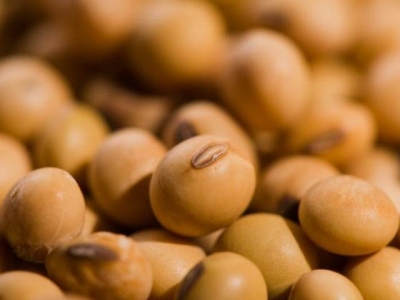High-oleic soybeans achieve final global regulatory milestone

Full global approval clears path for high-oleic soy market expansion and goal to plant 18 million acres.
High-oleic soybeans have crossed their final regulatory hurdle, clearing the way for farmers to plant more acres of these soybeans in 2018. Full global regulatory approval can help expand the market for high-oleic soy and create opportunities to increase the value and competitiveness of U.S. soybeans in the global marketplace.
Given this regulatory milestone, its proven performance and anticipated continued growth in market demand, high-oleic soybeans are expected to become the fourth-largest grain and oilseed crop in the U.S., with a goal of planting 18 million acres of high-oleic soybeans.
In order for end users to convert to high-oleic soybean oil, they need a reliable, consistent supply. The checkoff has been working with industry partners to ramp up acreage of high-oleic soybean varieties to meet growing demand. High-oleic soybean varieties were initially grown in three states and now are grown in 13 states. Acreage of high-oleic soybean varieties has grown from 50,000 acres in 2013 to more than 625,000 acres in 2017.
“Achieving high-oleic global regulatory approval enables us to meet end-user needs with a product they want and increase the use of U.S. soybean oil,” said Lewis Bainbridge, chair of the United Soybean Board and a farmer from Ethan, S.D. “We encourage farmers to talk with their seed representatives about high-oleic soybean variety options for 2018 planting to help keep pace with growing demand for this high-functioning oil.”
The soy checkoff has invested in research to ensure that high-oleic soybeans deliver the qualities required by oil end users. These varieties produce a more stable oil for food industry use in restaurants and packaged goods. The oil also expands uses for non-food applications, such as synthetic motor oil and automotive lubricants.
For farmers, checkoff-supported research has helped ensure that high-oleic soybeans perform the same as other soybean varieties and that variety development was expanded to a wider range of maturity groups.
“For high-oleic soybeans to be successful, we can’t sacrifice performance in the field or limit the geographies where they are grown,” Bainbridge said. “Farmers who plant high-oleic soybean varieties consistently report that their high-oleic varieties yield as well or better than their other soybean varieties.”
Related news
 Record export of VN fruits in 2017
Record export of VN fruits in 2017 Việt Nam’s fruit and vegetable exports reached a record $3.5 billion for year-on-year growth of 43.02 per cent
 Thai fruits, vegetables to flood Vietnamese market
Thai fruits, vegetables to flood Vietnamese market The volume of fruits & vegetables imported from Thailand is expected to surge this year as import tariffs imposed on these products are reduced to zero percent
 Tra Vinh calls for investment in agricultural projects
Tra Vinh calls for investment in agricultural projects The Mekong Delta province of Tra Vinh is calling for 969 billion VND (over 42.63 million USD) in investment in ten priority agricultural and rural development